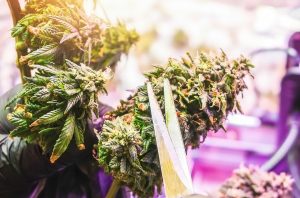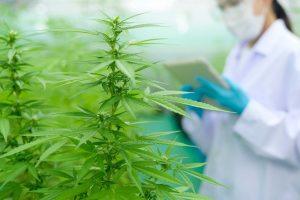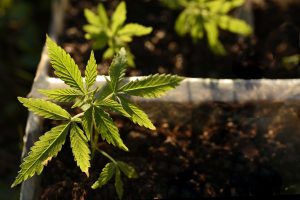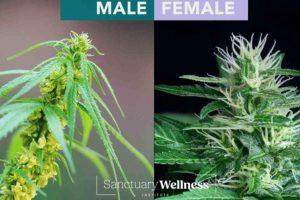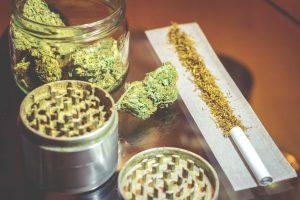Early Signs of Male Marijuana Plant
- Nicholas DiBella
- Published: December 3, 2022
- Updated: December 17, 2024
- Fact-checked by Dr. Desiree Granados
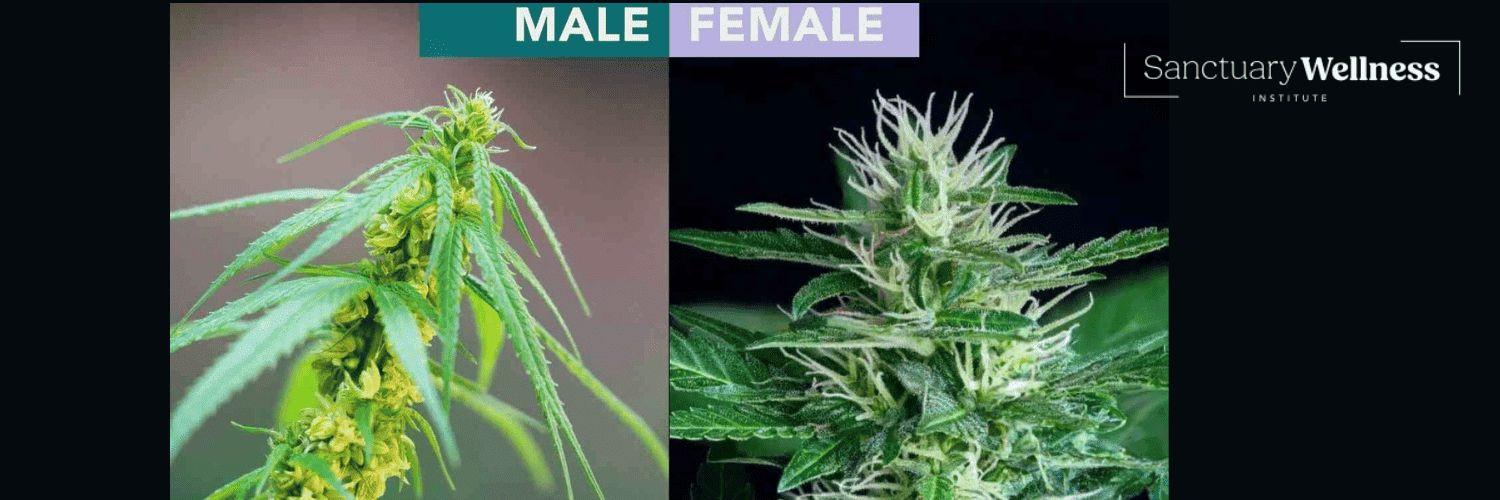
Marijuana cultivation is a fascinating process, especially when you understand the distinctions between male and female plants. The ability to identify the gender of your marijuana plant early on is crucial to a successful harvest. In particular, the presence of male marijuana plants can significantly influence the yield and quality of a harvest. In this blog, we’ll delve into the telltale signs of a male marijuana plant, equipping you with the knowledge you need to manage your crops.
What Are the Early Signs of a Male Marijuana Plant?
Early signs of a male marijuana plant typically emerge during the pre-flowering stage, which occurs approximately three to four weeks into their growth cycle. The first sign is the appearance of what are known as “pre-flowers.” These are small, bud-like formations that emerge at the junctions where the branches sprout from the main stem. Unlike the dense, resin-covered buds associated with female plants, male pre-flowers are noticeably sparser.
Another early sign of a male plant is the development of pollen sacs. These sacs, which resemble tiny balls, emerge before the plant fully enters its flowering stage. They are typically grouped together in clusters and will eventually open to release pollen. Finally, male plants tend to grow taller and have a more robust stem than females.
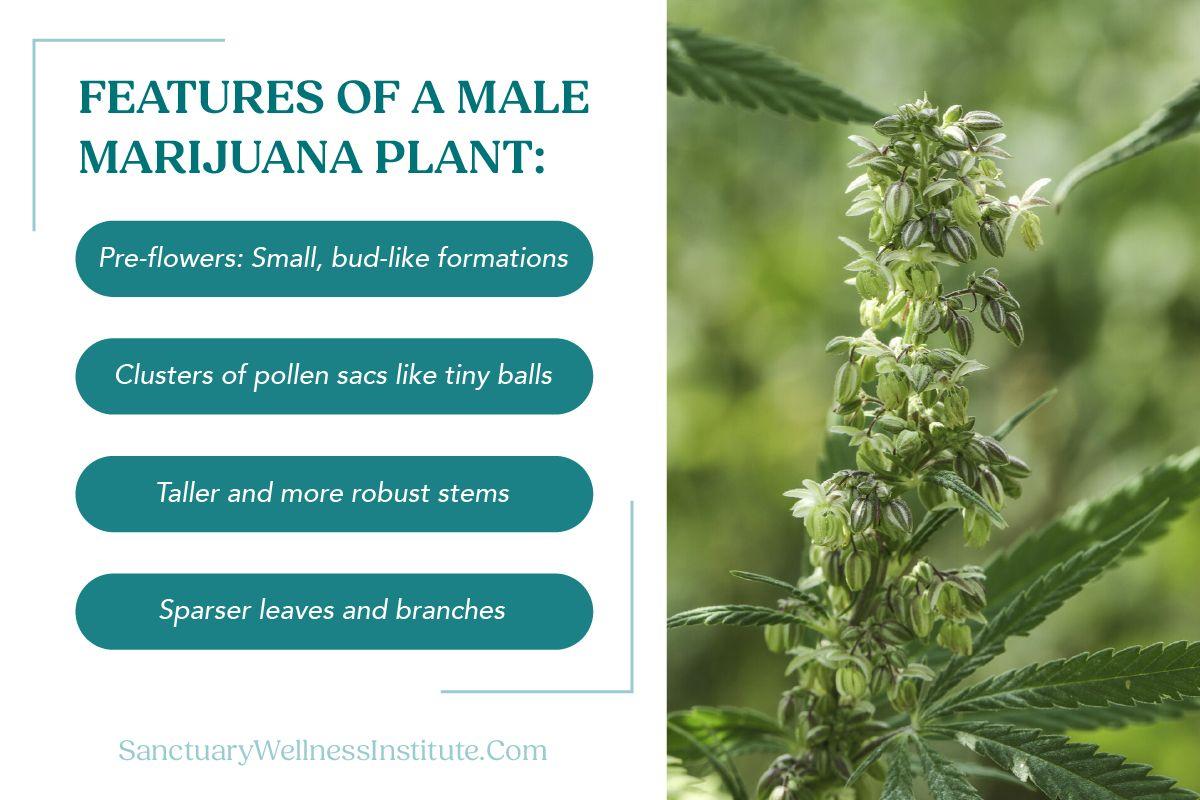
What Are the Early Signs of a Female Marijuana Plant?
Early signs of a female marijuana plant often become evident around the same time as their male counterparts, during the pre-flowering stage. The most noticeable sign is the development of “pre-flowers,” which in females are usually pear-shaped with long, translucent hairs called pistils. These pistils, which usually emerge in a pair, stick out from the top of the pre-flowers.
Another distinguishable sign is the absence of pollen sacs. Unlike male plants, female marijuana plants do not produce these clusters of sacs. Instead, they develop calyxes, which are teardrop-shaped and tend to be covered in resinous trichomes. In terms of physical features, female plants are usually shorter and bushier compared to males. They also exhibit a more complex branching pattern that allows them to support the weight of their buds once they begin to flower.
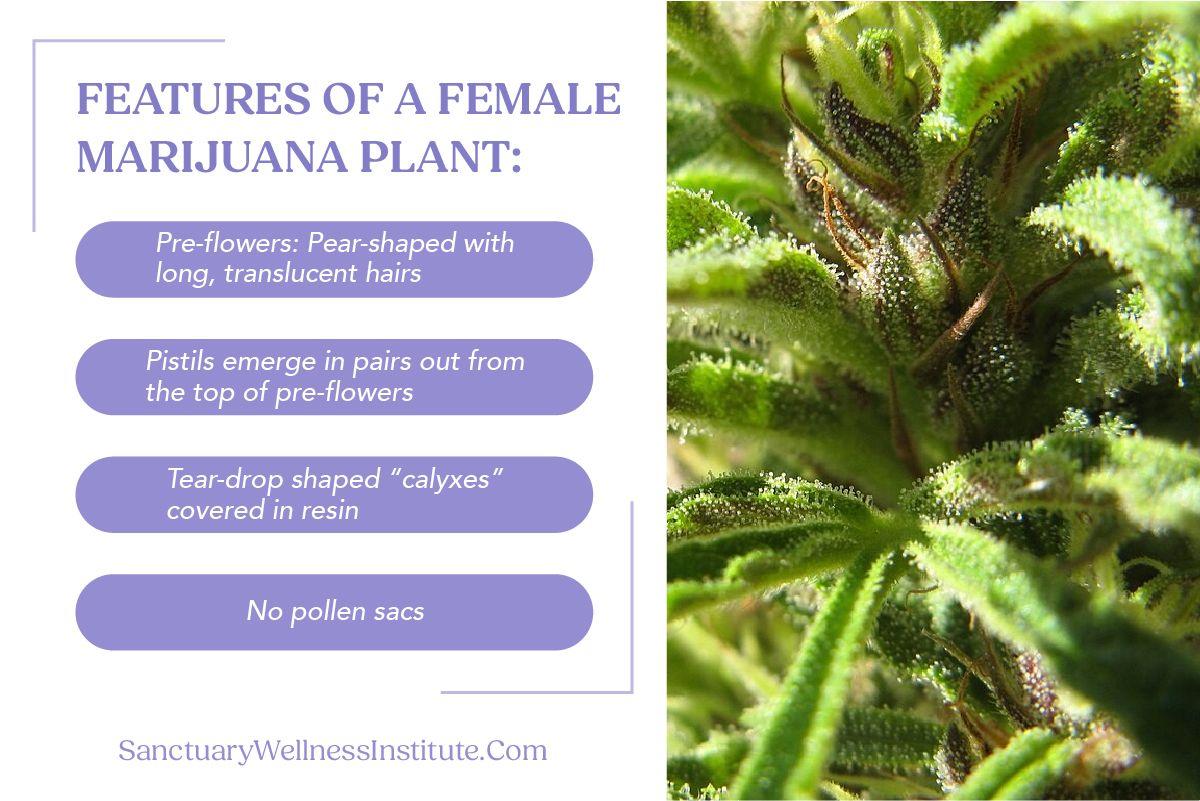
When Should You Sex Plants?
The optimal time to sex marijuana plants is during the pre-flowering stage, or roughly four to six weeks from the germination process. This is the period when plants start to display their gender through their pre-flowers. Identifying and separating male plants from females at this stage is crucial to prevent the males from pollinating the females.
If pollination occurs, females will divert their energy to seed production rather than developing potent, resinous buds. Therefore, early detection and separation are necessary to ensure a bountiful, high-quality harvest. Regular inspection is necessary during the pre-flowering period, as males may show signs of their sex slightly earlier than females.
Why Is Sexing Plants Important?
Sexing marijuana plants is a crucial step in the cannabis cultivation process due to the stark difference in the way male and female plants are used. If your goal is to harvest buds rich in THC or CBD, identifying and isolating male plants is essential to prevent pollination and seed production. On the other hand, if your goal is to cultivate seeds for future planting, allowing a few males to remain can be beneficial.
In essence, sexing plants allows growers to manage their crops effectively and meet their specified objective, whether that’s seed production, bud harvesting, or both. Sexing is a fundamental component of marijuana cultivation that directly impacts the quality, quantity, and usefulness of the final product.
Get Your Medical Marijuana Card with the Sanctuary
At the Sanctuary, we understand the importance of having access to high-quality medical marijuana. That’s why our compassionate and knowledgeable team is dedicated to helping patients obtain their medical marijuana card. Our experienced doctors are available for consultations and can assist you in navigating the application process. With a medical marijuana card, you can gain legal access to a wide variety of cannabis products specifically tailored to your needs.
Having a medical marijuana card can also provide other benefits for cultivators. In many states where medical marijuana is legal, having a card allows patients to legally grow their own cannabis plants at home. This not only gives them control over the quality and strain of their medicine but also allows for cost savings in the long run.
FAQ
Can you tell the gender of a seed?
No, you cannot determine the gender of a marijuana seed by simply looking at it. The gender of a marijuana plant is not visible until the pre-flowering stage, which is approximately three to four weeks into the plant’s growth cycle.
Why do growers prefer female plants?
Growers typically prefer female marijuana plants because they produce the large, resinous buds that are rich in THC and CBD. Male plants, on the other hand, produce pollen sacs instead of buds, and, if allowed to pollinate the females, cause them to produce seeds rather than buds. By ensuring their crops are primarily female, growers can maximize their yield of high-quality buds for medicinal and recreational use.
Can I turn a male plant female?
No, you cannot turn a male marijuana plant into a female. The sex of a marijuana plant is determined by its genetics at the time of its germination and cannot be changed. While growers can control certain environmental factors to influence the sex ratio of their plants, once a plant has been identified as male it cannot be turned into a female.
Can male marijuana plants ruin female marijuana plants?
Yes, male marijuana plants can “ruin” female plants if your goal is to produce buds for consumption. When a female plant is pollinated by a male plant, it shifts its energy to seed production instead of bud development. This results in a crop with fewer buds.
What should you do with a male cannabis plant?
When do male plants pollinate females?
Male plants usually begin producing pollen during the pre-flowering stage, which is typically four to six weeks into the growth cycle. However, they can continue to produce pollen until they are fully mature and ready to be harvested. It’s important to regularly inspect for male plants and remove them as soon as possible to prevent pollination and seed production in female plants.
How do you tell the difference between a male and female marijuana plant?
To differentiate between a male and female marijuana plant, you need to look at certain features that are specific to each gender.
Features of a male marijuana plant:
- Pre-flowers: These are small, bud-like formations that appear in the early stages of growth.
- Clusters of pollen sacs: Male plants develop clusters of pollen sacs that look like tiny balls, which will eventually open to release pollen.
- Taller and more robust stems: Male plants tend to have taller and thicker stems compared to female plants.
- Sparser leaves and branches: Male plants generally have fewer leaves and branches, making them appear less bushy than female plants.
By observing these characteristics, you can identify male marijuana plants and distinguish them from female plants.
Female marijuana plants have several distinct characteristics:
- Pre-flowers: These are pear-shaped with long, translucent hairs.
- Pistils: These emerge in pairs from the top of the pre-flowers.
- Calyxes: Female plants have tear-drop shaped calyxes covered in resin.
- No pollen sacs: Unlike male plants, female plants do not have pollen sacs.
These features help identify female plants, which are the ones that produce the buds prized by growers.
States Where We Offer Medical Marijuana Card Services
How we reviewed this article:
- Aaron Justis (2024). How to Identify Female and Male Marijuana Plants
https://www.wikihow.com/Identify-Female-and-Male-Marijuana-Plants - Medicinal Genomics (2024) When Do Cannabis Plants Show Signs of Gender/Sex?
https://medicinalgenomics.com/when-do-cannabis-plants-show-signs-of-gender-sex/ - Future Harvest Nutrients (2022) Cannabis Gender: Male Vs Female Weed
https://futureharvest.com/blogs/articles/cannabis-gender-male-versus-female-plants - Anjali Singh (2023) Why Is Gender Screening Your Cannabis Plants Important?
https://plantcelltechnology.com/blogs/blog/blogwhy-is-gender-screening-your-cannabis-plants-important
Current Version
First Published
December 3, 2022
Written By
Jake Peter
Fact-checked By
Dr. Desiree Granados
Editorial Process
Our Editorial Process

Nicholas DiBella received his psychology degree from West Chester University of Pennsylvania and has been writing content for the Sanctuary Wellness Institute since 2023. He is passionate about all things health & wellness.


